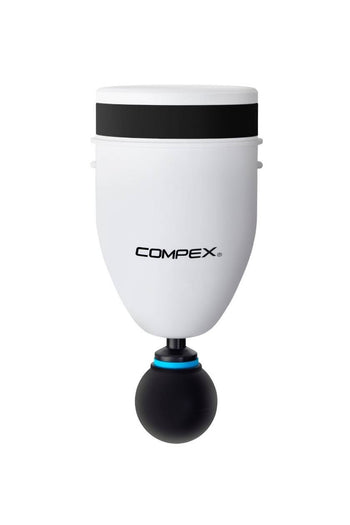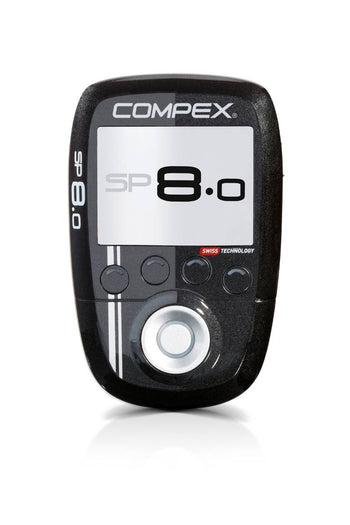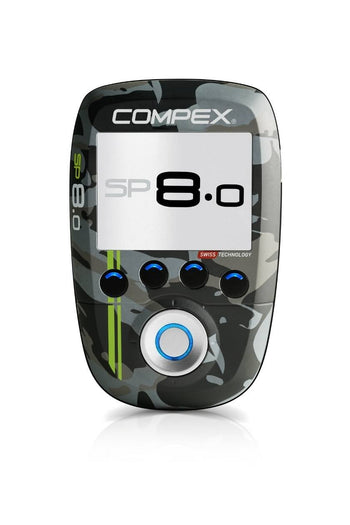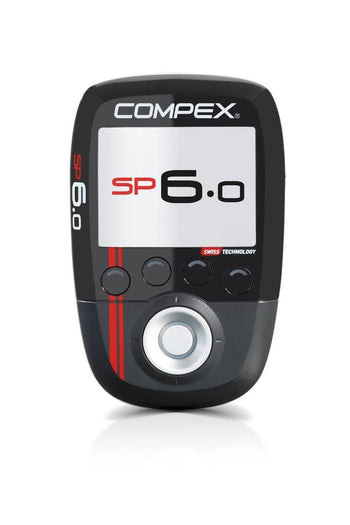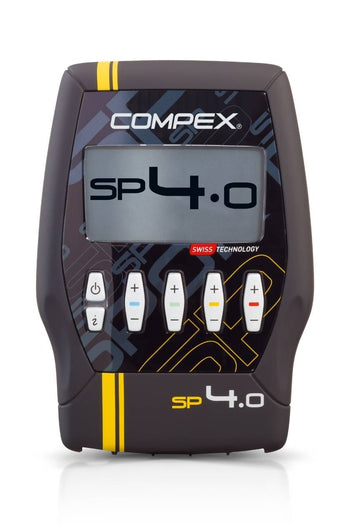False sciatica and piriformis syndrome are two common problems among runners, which can cause intense pain in the buttock, thigh and sometimes all the way down to the foot. Although similar, these two conditions have slightly different causes and treatments. Here's how to relieve them quickly so you can get back to running with peace of mind.
What is false sciatica?
False sciatica, also known as pseudosciatica, is pain that radiates along the path of the sciatic nerve, without affecting the nerve itself. It is often caused by irritation or inflammation of neighbouring structures, such as the gluteal muscles, ligaments or hip and pelvic joints.
In runners, false sciatica is frequently caused by overload or poor biomechanics leading to irritation of the piriformis muscle. This small muscle in the buttock can compress the sciatic nerve and cause sciatica-like pain.
What is piriformis syndrome?
Piriformis syndrome is a condition characterised by pain in the buttock, sometimes radiating down the back of the thigh to the calf or foot. It is caused by irritation or compression of the sciatic nerve by the piriformis muscle.
In runners, piriformis syndrome can result from hypertrophy or contracture of this muscle following intense or repeated effort. Poor posture, muscular imbalance or pelvic asymmetry can also contribute to this nerve compression.
How can you tell the difference between false sciatica and piriformis syndrome?
Although the symptoms are similar, there are a few ways of distinguishing false sciatica from piriformis syndrome:
- The pain of piriformis syndrome is often localised in the buttock, whereas false sciatica radiates lower down the thigh
- Piriformis syndrome is often aggravated by sitting down, crossing the legs or climbing stairs, because of the stretching of the muscle
- During the Pace test (palpation of the piriformis muscle), a sharp pain is felt in piriformis syndrome
- A clinical examination by a health professional (doctor, physiotherapist) is still necessary for correct diagnosis and treatment.
How is false sciatica and piriformis syndrome treated?
The aim of treatment is to relieve pain, reduce inflammation and restore normal function to the piriformis muscle and sciatic nerve. Here are the main treatment options:
Rest and painkillers
Relative rest from painful activity is recommended for a few days, avoiding aggravating positions. Painkillers such as paracetamol or non-steroidal anti-inflammatory drugs (NSAIDs) can be taken for a short time to relieve symptoms. Using Compex TENS can also help relieve pain locally.

Ice and heat
Applying cold (ice or gel pack) to the painful area for 15-20 minutes, 2-3 times a day, helps to reduce inflammation and acute pain. After a few days, applications of heat (hot water bottle, hot bath) can help to relax muscles.
Stretching and massage
Gentle stretching of the piriformis muscle on a daily basis gradually lengthens the muscle and reduces tension on the sciatic nerve. A deep massage of the gluteal muscles, carried out by a professional, can also help to release tension points. You can also use the massage programmes on your Compex muscle stimulator to release muscle tension.
Rehabilitation
Physiotherapy is often necessary to restore optimum function to the piriformis muscle and correct muscular imbalances. The physiotherapist may use appropriate mobilisation, strengthening and proprioception exercises.
Injections
In the event of unmanageable pain, a local corticosteroid injection may be suggested by the doctor to reduce inflammation to a greater extent. However, this injection is only an adjunct treatment, and must be accompanied by additional treatment to treat the functional problem.
Surgery
Surgery is only considered as a last resort, for the most severe and chronic cases of piriformis syndrome, when all other treatments have failed. It involves partially severing the piriformis muscle to free the sciatic nerve.
How can I prevent recurrence of false sciatica and piriformis syndrome?
To prevent the pain from recurring, it is important to correct the contributing factors and strengthen the lumbopelvic area. Here are a few tips:
Warming up and stretching
Before each running session, do a gradual warm-up lasting 10-15 minutes, followed by targeted stretching of the gluteal muscles, hamstrings and hip flexors. After the run, stretch these muscle groups again. You can also use a massage gun to give your gluteal muscles a thorough warm-up.
Strengthening muscles
Include 2 to 3 sessions a week of strengthening the muscles of the trunk, abdominals, buttocks and thighs. This will stabilise the pelvis and relieve the load on the piriformis muscle.
Postural correction
Adopt a good posture, with a slightly forward tilted pelvis, low shoulders and looking straight ahead. Avoid sitting still for too long. When running, make sure your head, trunk and pelvis are properly aligned.
The right shoes
Wear running shoes that are adapted to your body shape and stride, with good cushioning. Change them regularly, every 500 to 800 km depending on how they are used.
Recovery
Give yourself weekly rest days and recovery weeks every 4 to 6 weeks. Listen to your body's signals and don't hesitate to consult a doctor if you experience persistent pain.
By following this advice and dealing with the pain quickly, you should be able to run with peace of mind without fear of recurrence of sciatica or piriformis syndrome. Do not hesitate to consult a health professional if you have any doubts or if the pain persists.
References
Dommerholt J. Dry needling - peripheral and central considerations. J Manip Ther. 2011;19(4):223-227. doi:10.1179/106698111X13129729552065
Hopayian K, Song F, Riera R, Sambandan S. The clinical features of the piriformis syndrome : a systematic review. Eur Spine J. 2010;19(12):2095-2109. doi:10.1007/s00586-010-1504-9
Fishman LM, Dombi GW, Michaelsen C, et al. Piriformis syndrome : diagnosis, treatment, and outcome--a 10-year study. Arch Phys Med Rehabil. 2002;83(3):295-301. doi:10.1053/apmr.2002.30622
Papadopoulos EC, Khan SN. Piriformis syndrome and low back pain : a new classification and review of the literature. Orthop Clin North Am. 2004;35(1):65-71. doi:10.1016/S0030-5898(03)00105-6
FAQ - False Sciatica & Piriformis Syndrome in Runners
What not to do with piriformis syndrome?
With piriformis syndrome, avoid sitting for prolonged periods or positions that compress the piriformis muscle (such as cross-legged sitting). Running, especially on hard surfaces or with improper form, may worsen symptoms. Avoid aggressive stretching if it increases pain, and be cautious with activities that involve repetitive hip movements.
Running and sciatica – Is it safe?
Running with sciatica can worsen symptoms, especially if poor posture or movement mechanics are involved. It’s best to rest during acute episodes and focus on low-impact activities (like swimming or cycling) to maintain fitness. After the pain subsides, gradually return to running while incorporating core strengthening and stretching exercises to avoid re-injury.
Running piriformis – Can I continue running?
If you have piriformis syndrome, running may exacerbate the condition, especially during flare-ups. It’s recommended to reduce or modify your running routine until you’re pain-free. You can focus on cross-training activities such as cycling or swimming while working on strength and flexibility exercises for the gluteal and hip muscles.
Should I stop exercising with piriformis syndrome?
While you may need to avoid activities that exacerbate piriformis syndrome, completely stopping exercise isn't always necessary. Focus on low-impact exercises like swimming or cycling. Once pain subsides, you can engage in strengthening and flexibility exercises for the hip and glute muscles to prevent recurrence of symptoms.
What worsens piriformis syndrome?
Sitting for long periods, especially in positions that compress the hips, can worsen piriformis syndrome. Repetitive activities that require excessive hip rotation or flexion, such as running on hard surfaces with improper form, can also aggravate the condition. Incorrect posture, muscle imbalances, and pelvic asymmetry can contribute to symptoms as well.
Should I stretch piriformis if it hurts?
If stretching the piriformis muscle increases pain, it’s best to avoid aggressive stretching. Instead, perform gentle stretches and gradually work on lengthening the muscle. Foam rolling and soft tissue work (using a massage gun) can help release tension without overstretching. Consult a physiotherapist if you're unsure about the best approach for stretching.


